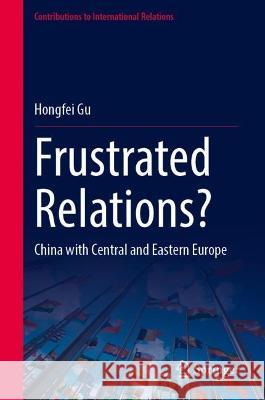Frustrated Relations? » książka
topmenu
Frustrated Relations?
ISBN-13: 9789819937295 / Angielski / Twarda / 2023
Frustrated Relations?
ISBN-13: 9789819937295 / Angielski / Twarda / 2023
cena 524,53
(netto: 499,55 VAT: 5%)
Najniższa cena z 30 dni: 462,63
(netto: 499,55 VAT: 5%)
Najniższa cena z 30 dni: 462,63
Termin realizacji zamówienia:
ok. 22 dni roboczych
Bez gwarancji dostawy przed świętami
ok. 22 dni roboczych
Bez gwarancji dostawy przed świętami
Darmowa dostawa!
This book focuses on China’s foreign strategy and policy toward Central and Eastern Europe via the “China-CEEC” Cooperation Mechanism. It discusses the formation and evolution of the mechanism, concentrating on China’s leading role in this process, and covering a range of issues related to the mechanism’s organizational development. This discussion includes the broad context of China’s foreign policy, a coherent framework analysis of institution and cooperation issues, the internal aspects of the heterogeneity, external aspects of its asymmetry interactions, and finally, its emphases on cooperation in the two primary dimensions of great powers engagement and localization.
After the end of the Cold War and the sudden and shocking collapse of the Soviet Union, the geopolitics of Central and Eastern Europe begins to undergo dramatic changes. Since then, an increase in public discussion in China about the transformation from the planned economy to market economy became very visible. Moreover, this part of the world perceives as the gate to Europe through almost forget Silk Road. Both factors have played a crucial role in shaping China’s interest in the region of Central and Eastern Europe. Following the points mentioned above, China’s interests in Central and Eastern Europe are due to several factors, including its frontier stability, national security, economic expansion, and search for new sources of energy and new markets for made in China products. Recognition of the importance of the region culminates in the recent Chinese grand strategy of “Belt and Road,” which highlights Central and Eastern Europe as the essential link in China’s plan New Silk Road strategy. In this regard, the “China-CEEC” Cooperation Mechanism has a crucial role in China’s “Go West” strategy.











